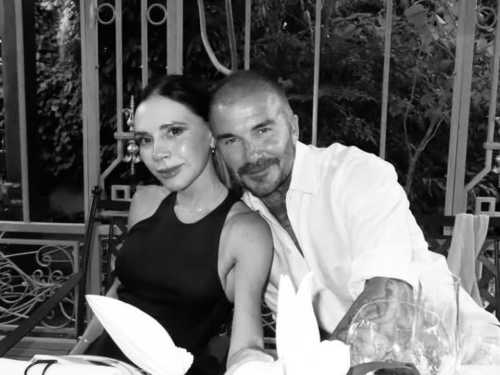
Lewis McCrary, executive editor: I was delighted to recently discover The Gargoyle Hunters, a debut novel published by architectural journalist John Freeman Gill last year. Because Gill is not among the few recognized authors in contemporary literary fiction who command instant adulation, there was perhaps too little coverage of his inventive work—though the Washington Post did praise it as an “unabashedly charming story,” and the New York Times interviewed Gill in its real estate section (and included a nice series of photographs of the kind of architectural detail celebrated in the novel). One wonders if the author’s clear admiration for traditional architecture also led some to unfairly dismiss it as reactionary nostalgia.
The novel, which follows an architectural salvager and his son through a series of adventures in the bad old days of 1970s New York City, will certainly engage those interested in the story of our built environment, particularly preservationists and admirers of the lost craft of ornament. Gill reminds us that these kinds of handmade details were de rigueur for even average townhomes until that tradition gave way to the blank facades of modernism after World War II.
Griffin, the young teenager at the center of the tale, is a well-developed personality, and his suffering of family breakdown in a post-1960s culture is poignant. But the very real buildings of New York—some of which survived the wrecking balls of that era, while others didn’t—are also described with an emotional intensity that is rare even for good architectural criticism. Most prominent is Cass Gilbert’s 1912 Woolworth Building, a skyscraper from an era when the neo-Gothic imagination, gargoyles and all, was allowed to soar above Manhattan’s streets.
♦♦♦
Matt Purple, managing editor: I’ve been reading Gore Vidal—not his political writings, which mix into an interesting brew a despairing “republic not an empire” paleoconservatism with a 1960s-predictive moral radicalism, but his novels, generally regarded as less influential than the essays. His first, Williwaw, is a tense tale at sea about a U.S. Navy ship near the Aleutian Islands that gets battered by a storm. It’s written in a minimalist style, which makes it a breezy read but does a disservice to its material. The seamen come off as carbon-copied and mechanical; it isn’t icebergs that imperil them but the Iceberg Theory. The remote Aleutians, an alluringly unique setting, never seem fully rendered.
A bit better, at least so far, is The Judgment of Paris, a novel far more predictive of the style that would later come to define Vidal’s fiction. The twinkling humor is there, on politics (“A suspicion was beginning to form in Philip’s mind that a certain type of energetic mediocrity might, after all, be politically more useful in a republican society than brilliance or wit or passion”) and on sex, Vidal’s two favorite subjects. His third, history, sees his protagonist skip from the bathhouses of Rome to a dig site outside Cairo, encountering ideological eccentrics and moral dilemmas along the way.
And then I suppose I can no longer dodge Myra Breckinridge. A proper reading of Vidal can’t be done without his most controversial and impactful work, whose fans even admit it was written in gleefully bad taste and whose enemies go much further. After famously calling Vidal a “queer” during one of their televised debates in 1968, William F. Buckley followed with “Let the author of Myra Breckinridge go back to his pornography.” Buckley had previously read Myra and concluded that it gives “gratification only to sadist homosexuals and challenge only to taxonomists of perversion.” Not the editors of conservative magazines then? I suppose we’ll find out.
♦♦♦
Emile A. Doak, director of events & outreach: With the publication of Patrick Deneen’s Why Liberalism Failed, debate over the future of the liberal order is all the rage, especially within Catholic circles. Is liberalism inherently opposed to Catholic conceptions of the common good, or is liberalism a hospitable system in which Catholics may assert their positions in the public square? My sympathies tend to fall on the “incompatible” side, yet absent viable alternatives, I still find myself hesitant to philosophically jettison a Catholic cooperation with the liberal project.
So to give the other side of this emerging debate its proper due, I’m reading A Liberalism Safe for Catholicism? Perspectives from the Review of Politics. Editors Daniel Philpott and Ryan T. Anderson have compiled a collection of musings on the Church’s relationship to liberalism—particularly in America—from throughout the nearly 80-year history of the academic journal The Review of Politics. And what a collection it is: included are intellectual heavyweights like Jacques Maritain, Yves Simon, John Finnis, David L. Schindler, and James V. Schall S.J.
I’m not far into the collection, but already the essential fault lines are appearing. Any Catholic defense of liberalism must buttress against a slide into relativism, which neoconservative Catholic thinker David Novak does by endorsing a political variety of liberalism while opposing a philosophical. This distinction draws sharp rebuke from political scientist Thomas R. Rourke, who “argues that Novak has reduced the common good to the collection of individual goods.” For Rourke, the individualism underlying liberal political thought inevitably bleeds into the philosophical and religious realm, thereby belying a robust, Catholic conception of the common good.
Rourke’s and Novak’s debate is a microcosm of this intra-faith squabble. Is it possible to accommodate the Church’s commitment to truth to a regime that purports neutrality in most (if not all) matters of public life? Are the philosophical assumptions undergirding liberalism even truly neutral in the first place? And if not, what are the viable alternatives? In a world of Donald Trump and Brexit, A Liberalism Safe for Catholicism explores the vital questions facing not just the Catholic Church, but Western democracy itself.
Sourse: theamericanconservative.com






